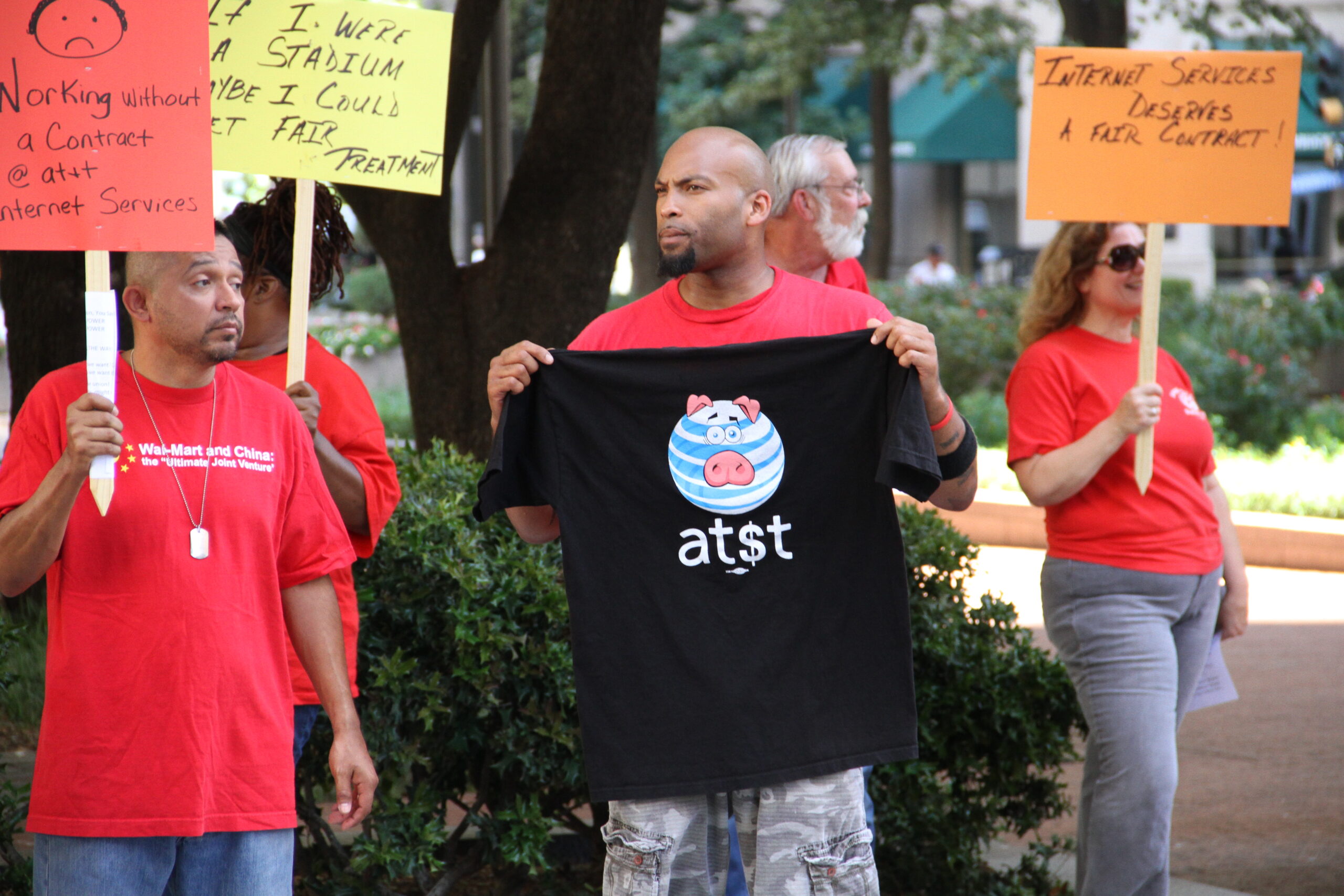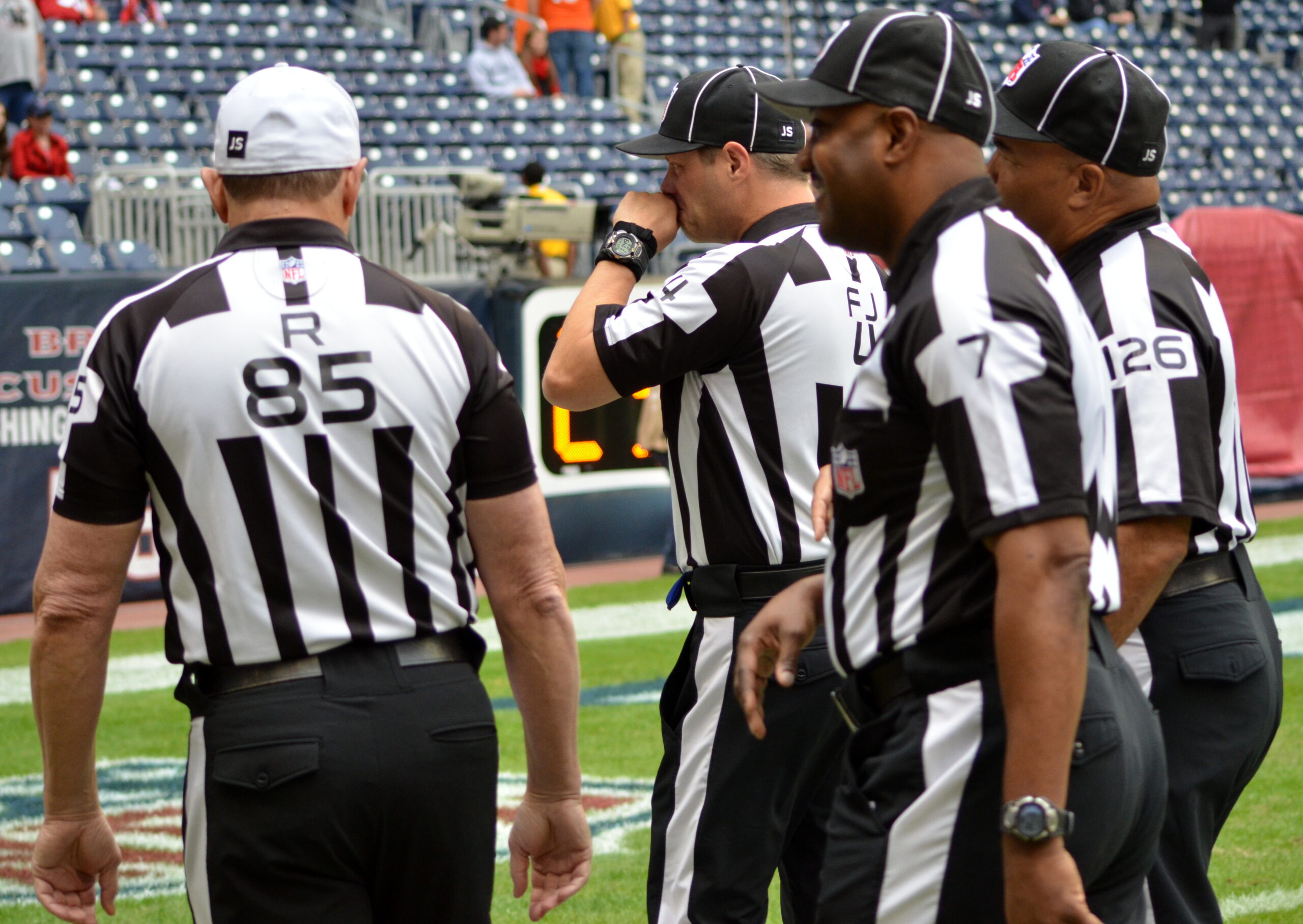12.3 Union and Management Tactics
Adapted by Stephen Skripak with Ron Poff
Union Tactics
Unions have several options at their disposal to pressure company management into accepting the terms and conditions union members are demanding. The tactics available to the union include striking, picketing, and boycotting. When they go on strike, workers walk away from their jobs and refuse to return until the issue at hand has been resolved. As undergraduates at Yale discovered when they arrived on campus in fall 2003, the effects of a strike can engulf parties other than employers and strikers: with 4,000 dining room workers on strike, students had to scramble to find food at local mini-markets. The strike—the eighth at the school since 1968—lasted 23 days, and in the end, the workers got what they wanted: better pension plans.[1]
Though a strike sends a strong message to management, it also has consequences for workers, who don’t get paid when they’re on strike. Unions often ease the financial pressure on strikers by providing cash payments, which are funded from the dues members pay to the unions. It is important to note that some unionized workers may not have the right to strike. For example, strikes by federal employees, such as air-traffic controllers, can be declared illegal if they jeopardize the public interest.
When you see workers parading with signs outside a factory or an office building (or even a school), they’re probably using the tactic known as picketing (see Figure 12.2). The purpose of picketing is informative—to tell people that a workforce is on strike or to publicize some management practice that is unacceptable to the union. In addition, because other union workers typically won’t cross picket lines, marchers can sometimes interrupt the daily activities of the targeted organization. In April 2001, faculty at the University of Hawaii, unhappy about salaries, went on strike for 13 days. Initially, many students cheerfully headed for the beach, but before long, many more—particularly graduating seniors—began to worry about finishing the semester with the credits they needed to keep their lives on schedule.[2]

The final tactic available to unions is boycotting, in which union workers refuse to buy a company’s products and try to get other people to follow suit. The tactic is often used by the AFL–CIO, which maintains a national “Don’t Buy or Patronize” boycott list. In 2003, for example, at the request of two affiliates, the Actor’s Equity Association and the American Federation of Musicians, the AFL–CIO added the road show of the Broadway musical Miss Saigon to the list. Why? The unions objected to the use of non-union performers who worked for particularly low wages and to the use of a “virtual orchestra,” an electronic apparatus that can replace a live orchestra with software-generated orchestral accompaniment.[3]
Management Tactics
Management doesn’t typically sit by passively, especially if the company has a position to defend or a message to get out. One available tactic is the lockout—closing the workplace to workers—though it’s rarely used because it’s legal only when unionized workers pose a credible threat to the employer’s financial viability. If you are a fan of professional basketball, you may remember the NBA lockout in 2011 (older fans may remember a similar scenario that took place in 1999) which took place because of a dispute regarding the division of revenues and the structure of the salary cap.
Lockout tactics were also used in the 2011 labor dispute between the National Football League (NFL) and the National Football League Players Association when club owners and players failed to reach an agreement on a new contract. Prior to the 2011 season, the owners imposed a lockout, which prevented the players from practicing in team training facilities. Both sides had their demands: the players wanted a greater percentage of the revenues, which the owners were against. The owners wanted the players to play two additional regular season games, which the players were against. With the season drawing closer, an agreement was finally reached in July 2011, bringing the 130-day lockout to an end and ensuring that the 2011 football season would begin on time.[4]

Another management tactic is replacing striking workers with strikebreakers—non-union workers who are willing to cross picket lines to replace strikers. Though the law prohibits companies from permanently replacing striking workers, it’s often possible for a company to get a court injunction that allows it to bring in replacement workers. For example, the NFL employed replacement referees in 2012, a move which led to a number of very questionable calls on the field.[5]
Key Takeaways
- If labor differences can’t be resolved through collective bargaining or formal grievance procedures, each side may resort to a variety of tactics. The union can do the following:
- Call a strike (in which workers leave their jobs until the issue is settled).
- Organize picketing (in which workers congregate outside the workplace to publicize their position).
- Arrange for boycotting (in which workers and other consumers are urged to refrain from buying an employer’s products).
- Management may resort to a lockout—closing the workplace to workers—or call in strikebreakers (nonunion workers who are willing to cross picket lines to replace strikers).
- Steve Greenhouse (2003). “Yale's Labor Troubles Deepen as Thousands Go on Strike.” New York Times. Retrieved from: http://www.nytimes.com/2003/03/04/nyregion/yale-s-labor-troubles-deepen-as-thousands-go-on-strike.html; Diane Scarponi (2003). “Pair of Yale Unions Approve Contract.” Los Angeles Times. Retrieved from: http://articles.latimes.com/2003/sep/21/news/adna-yale21 ↵
- Associated Press (2001). “Hawaii Professors End Strike.” USA Today. Retrieved from: http://usatoday30.usatoday.com/news/nation/2001-04-18-hawaii.htm ↵
- AFL–CIO (2003). “Statement by AFL–CIO President John Sweeney on 'Miss Saigon' Touring Show.” AFL–CIO Press Releases. Retrieved from: http://ftp.workingamerica.org/Press-Room/Press-Releases/Statement-by-AFL-CIO-President-John-Sweeney-on-Mi ↵
- CNN Wire Staff (2011). “Players, Owners Sign Deal to End NFL Lockout.” CNN. Retrieved from: http://edition.cnn.com/2011/SPORT/07/25/nfl.deal/ ↵
- Michael Pearson (2012). “Sorry About That, NFL Chief Says About Replacements.” CNN. Retrieved from: http://www.cnn.com/2012/09/27/sport/nfl-referees-deal/ ↵
workers parading with signs outside a factory or an office building (or even a school)
union workers refuse to buy a company’s products and try to get other people to follow suit
closing the workplace to workers
nonunion workers who are willing to cross picket lines to replace strikers

